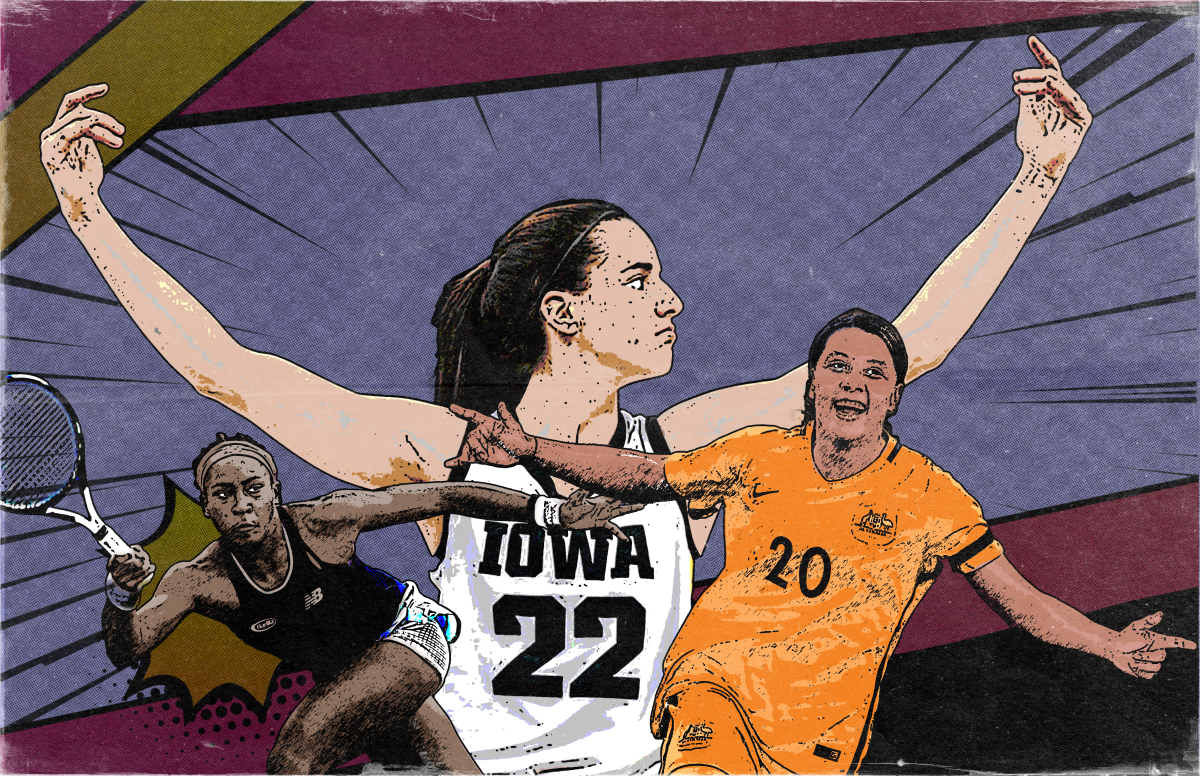The call for female athletes to get fairly paid has been around for years, but that money just doesn’t exist due to the lack of equal viewership, advertisement, merchandise and more. Unfortunately, this system has been cyclical for years, with a lack of money making it impossible to gain popularity, while a lack of popularity creates a further lack of funds. However, through the strategic use of social media to create a new type of fan, women’s sports have begun to break the cycle in basketball, soccer and even hockey.
This year in women’s college basketball has been something special. Viewership skyrocketed with multiple games in March Madness breaking broadcast records, including crazy figures like the LSU vs. Iowa matchup gaining more viewers than all five Stanley Cup Finals games combined. Additionally, the UConn-Iowa NCAA game in the women’s basketball tournament had the second-most average viewers of any non-football broadcast in ESPN’s history. But women’s college basketball has used the incredibly successful March Madness format for years, so what’s different this year?
The answer is as simple as one name: Caitlin Clark. Even South Carolina’s legendary head coach, Dawn Staley, thanked Clark for what she has done for the sport after beating Clark in the championship game. Clark possesses some intangible marketability. Her constant presence on social media drew mass amounts of attention to her. Throughout the season, the NCAA has strategically used Clark’s social media presence to market Clark and the sport as a whole. Before long, Women’s March Madness was reaching new heights across the board. When South Carolina finished their undefeated season on Sunday, more fans than ever had the opportunity to take in a truly spectacular moment in sports history, all because Clark created a brand-new audience for the sport.
The success of women’s sports extends beyond college sports. The 2023 World Cup was a massive success across the board. While official global audience numbers aren’t available yet, FIFA’s chief women’s football officer predicts that viewership for the 2023 final will have jumped over 800 million international viewers since the 2019 final. Similarly to women’s basketball, this success has come mainly from social media use. Content mentioning the tournament saw a 232% increase from 2019. This success came in part because the tournament changed its marketing strategy from previous tournaments. FIFA advertised the rise in competition against the once-dominant United States through social media. Fans were intrigued by the chance for something new and more competitive, and viewership globally skyrocketed.
New leagues have also found success. The Professional Women’s Hockey League (PWHL) has already broken attendance records in year one, partially due to social media. There have been many previous attempts to create a successful professional women’s hockey league, but these leagues have often clashed, leading to failure. However, the PWHL has been unique, presenting a united front with a lack of other leagues competing for viewership. This united front has allowed the PWHL to have the sole attention of women’s hockey supporters on social media, an opportunity that the league has not taken lightly, allowing it to reach heights none of its predecessors have reached.
But why does it matter if women’s sports are easy to find on social media? The simple answer is that being a dedicated fan takes work. With the chaos of daily life, many people aren’t willing to put in the time required to be a devoted fan. This is part of the reason the NFL has such success; it has a simple schedule, where games are always at the same time on the same days on the same channels. For years, women’s sports have been so obscure and hard to follow in the media that to be a fan at all, you had to dedicate time, which turned away many potential new viewers. But now, with social media, new viewers can start as casual fans of women’s sports. This transition is crucial as it has changed supporting women’s sports from a moral obligation into the fun, enjoyable entertainment they have always been.







